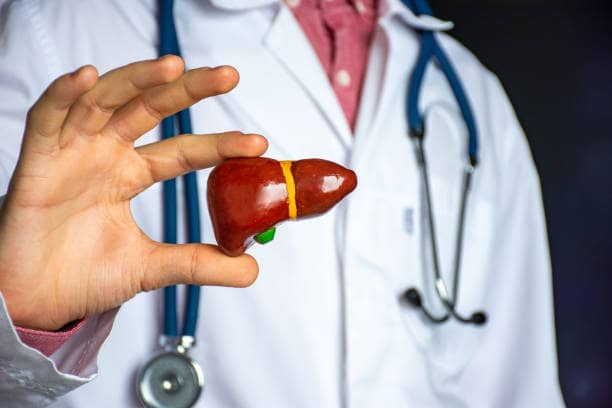Male Reproductive System: The male reproductive system is a complex and finely tuned biological mechanism responsible for the production and delivery of sperm, essential for human reproduction. While often overlooked, its functions are vital in the perpetuation of our species. In this comprehensive article, we will delve deep into the male reproductive system, exploring its anatomy, functions, hormonal regulation, and the importance of maintaining its health.

Anatomy of the Male Reproductive System:
The male reproductive system consists of several organs, each with distinct functions that contribute to the overall process of reproduction. These organs include:
- Testes: The testes, or testicles, are the primary male reproductive organs. They are located within the scrotum, a sac-like structure outside the body, which helps maintain the optimal temperature for sperm production. The testes produce sperm through a process called spermatogenesis and also secrete the male sex hormone, testosterone.
- Epididymis: The epididymis is a coiled tube located behind each testicle. It serves as a storage site for mature sperm and also plays a role in the maturation and transportation of sperm.
- Vas Deferens: The vas deferens are muscular tubes that connect the epididymis to the urethra. During ejaculation, they transport sperm from the epididymis to the urethra, where it is mixed with seminal fluids to form semen.
- Seminal Vesicles: The seminal vesicles are two small glands located behind the bladder. They produce a thick, alkaline fluid rich in fructose and prostaglandins, which provides nourishment and mobility to sperm.
- Prostate Gland: The prostate gland surrounds the urethra just below the bladder. It produces a milky, alkaline fluid that makes up a significant portion of semen. This fluid contains enzymes and nutrients that help sperm survive in the acidic environment of the female reproductive tract.
- Bulbourethral Glands: Also known as Cowper’s glands, these small glands are located beneath the prostate. They secrete a clear, slippery fluid that lubricates the urethra and neutralizes any residual acidity, creating a suitable environment for sperm.
- Urethra: The urethra is a duct that carries both urine from the bladder and semen from the reproductive organs to the external environment. To prevent mixing, a sphincter muscle at the base of the bladder controls the release of urine during ejaculation.
Functions of the Male Reproductive System:
The male reproductive system is primarily responsible for the production, storage, and delivery of sperm to the female reproductive tract during sexual intercourse. To achieve this, it performs several crucial functions:
- Spermatogenesis: The testes continuously produce sperm through a process called spermatogenesis. This intricate process involves the division and differentiation of germ cells, ultimately yielding mature sperm with the genetic information necessary for fertilization.
- Hormone Production: In addition to sperm production, the testes secrete testosterone, the primary male sex hormone. Testosterone is responsible for the development and maintenance of secondary sexual characteristics in males, such as facial hair, deep voice, and muscle mass.
- Storage and Maturation: The epididymis serves as a storage site for mature sperm. Here, sperm undergo a maturation process, becoming motile and capable of fertilization.
- Transportation: The vas deferens plays a crucial role in transporting sperm from the epididymis to the urethra. During ejaculation, this muscular tube contracts to propel sperm forward.
- Seminal Fluid Production: The seminal vesicles, prostate gland, and bulbourethral glands collectively produce seminal fluids that nourish, protect, and transport sperm. These fluids also help neutralize the acidity of the female reproductive tract, ensuring sperm’s survival.
- Ejaculation: Ejaculation is the process by which sperm and seminal fluids are expelled from the male reproductive system through the urethra during sexual climax. This is essential for delivering sperm to the female reproductive tract for fertilization.
Hormonal Regulation of the Male Reproductive System:
The male reproductive system’s functions are regulated by a complex interplay of hormones produced by various glands within the body. The primary hormones involved are testosterone and gonadotropins.
- Testosterone: Testosterone, produced by the Leydig cells in the testes, is the key hormone responsible for the development of male secondary sexual characteristics, such as facial and body hair, deepening of the voice, and increased muscle mass. It also plays a crucial role in maintaining libido and sperm production.
- Gonadotropins: The production of testosterone and the initiation of spermatogenesis are regulated by two gonadotropin hormones: luteinizing hormone (LH) and follicle-stimulating hormone (FSH). These hormones are produced by the anterior pituitary gland in response to signals from the hypothalamus. LH stimulates the Leydig cells to produce testosterone, while FSH stimulates the Sertoli cells in the testes to support sperm development.
The hypothalamus-pituitary-gonadal axis tightly controls the secretion of these hormones, ensuring a delicate balance that maintains male reproductive function. This hormonal regulation ensures that sperm production and sexual characteristics develop and function optimally.
Common Disorders and Health Issues:
Maintaining the health of the male reproductive system is essential for overall well-being and fertility. Several common disorders and health issues can affect this system:
- Erectile Dysfunction (ED): ED is the inability to achieve or maintain an erection sufficient for sexual intercourse. It can result from various factors, including psychological, hormonal, vascular, or neurological issues. Lifestyle factors such as smoking, obesity, and excessive alcohol consumption can also contribute to ED.
- Infertility: Male infertility can arise from problems with sperm production, quality, or delivery. Factors such as genetic conditions, hormonal imbalances, infections, and lifestyle choices (e.g., smoking and drug use) can impact fertility.
- Testicular Disorders: Testicular disorders include conditions such as testicular cancer, testicular torsion (a medical emergency involving the twisting of the spermatic cord), and testicular trauma. Early detection and treatment are crucial for preserving fertility and overall health.
- Prostate Problems: Prostate disorders, including benign prostatic hyperplasia (enlarged prostate) and prostate cancer, can affect urinary and sexual function. Regular check-ups and early detection are vital for managing these conditions effectively.
- Sexually Transmitted Infections (STIs): STIs, such as chlamydia, gonorrhea, and syphilis, can damage the male reproductive system if left untreated. Using protection, getting tested, and practicing safe sexual behavior can reduce the risk of STIs.
- Hormonal Imbalances: Hormonal imbalances, including low testosterone levels (hypogonadism), can lead to a range of symptoms, including reduced libido, fatigue, and infertility. Hormone replacement therapy may be necessary to restore hormonal balance.
- Varicocele: A varicocele is the enlargement of veins within the scrotum, similar to varicose veins. It can disrupt sperm production and may require surgical intervention if it affects fertility.
Preventive Measures and Tips for Maintaining Male Reproductive Health:
To maintain a healthy male reproductive system and reduce the risk of disorders, it’s essential to adopt a proactive approach to health and well-being. Here are some preventive measures and tips:
- Regular Check-ups: Schedule regular check-ups with a healthcare provider to monitor the health of your reproductive system. Early detection of issues can lead to more effective treatment.
- Safe Sex Practices: Practicing safe sex, including using condoms, can help protect against STIs that may affect the reproductive system.
- Healthy Lifestyle: Maintain a balanced diet, engage in regular physical activity, manage stress, and get adequate sleep. These lifestyle factors can positively impact reproductive health.
- Avoid Tobacco and Alcohol: Smoking and excessive alcohol consumption can impair fertility and sexual function. Quitting smoking and moderating alcohol intake can have significant benefits.
- Manage Chronic Conditions: If you have chronic conditions like diabetes or hypertension, work with your healthcare provider to manage them effectively, as they can affect reproductive health.
- Protect Against Trauma: To prevent testicular trauma, wear protective gear when engaging in contact sports or activities that pose a risk of injury to the genital area.
- Educate Yourself: Understanding your reproductive system and its health needs is essential. Stay informed about the latest developments in male reproductive health.
Conclusion:
The male reproductive system is a marvel of biological engineering, responsible for the production, storage, and delivery of sperm essential for human reproduction. Understanding its anatomy, functions, and hormonal regulation is crucial for appreciating its significance in our lives.
Maintaining male reproductive health requires a proactive approach that includes regular check-ups, safe sexual practices, a healthy lifestyle, and the avoidance of harmful habits. By prioritizing reproductive health, individuals can optimize their chances of fertility and overall well-being. Remember that early detection and intervention can make a significant difference in the management of reproductive disorders, ensuring a fulfilling and healthy life.








One thought on “Male Reproductive System”